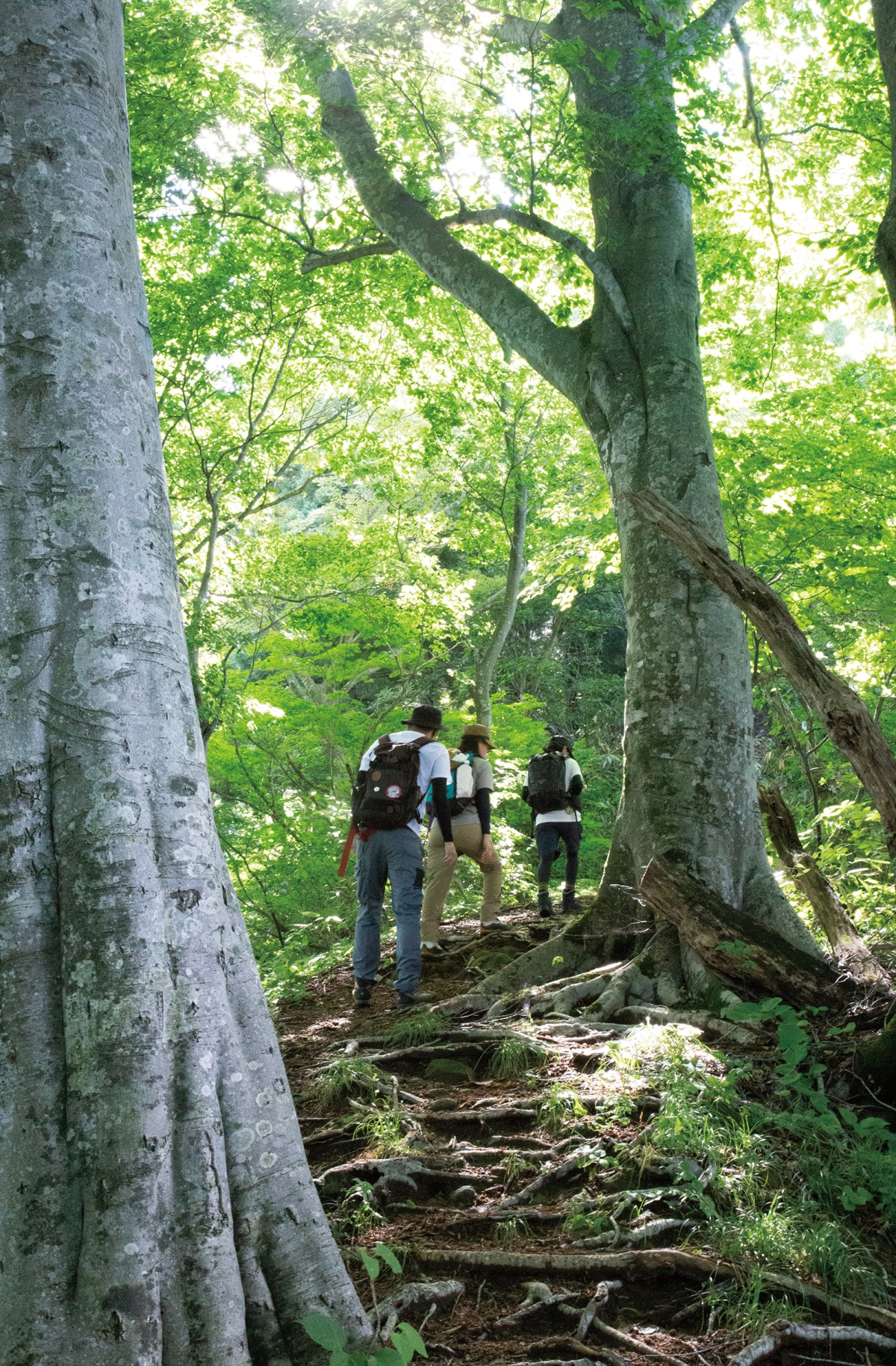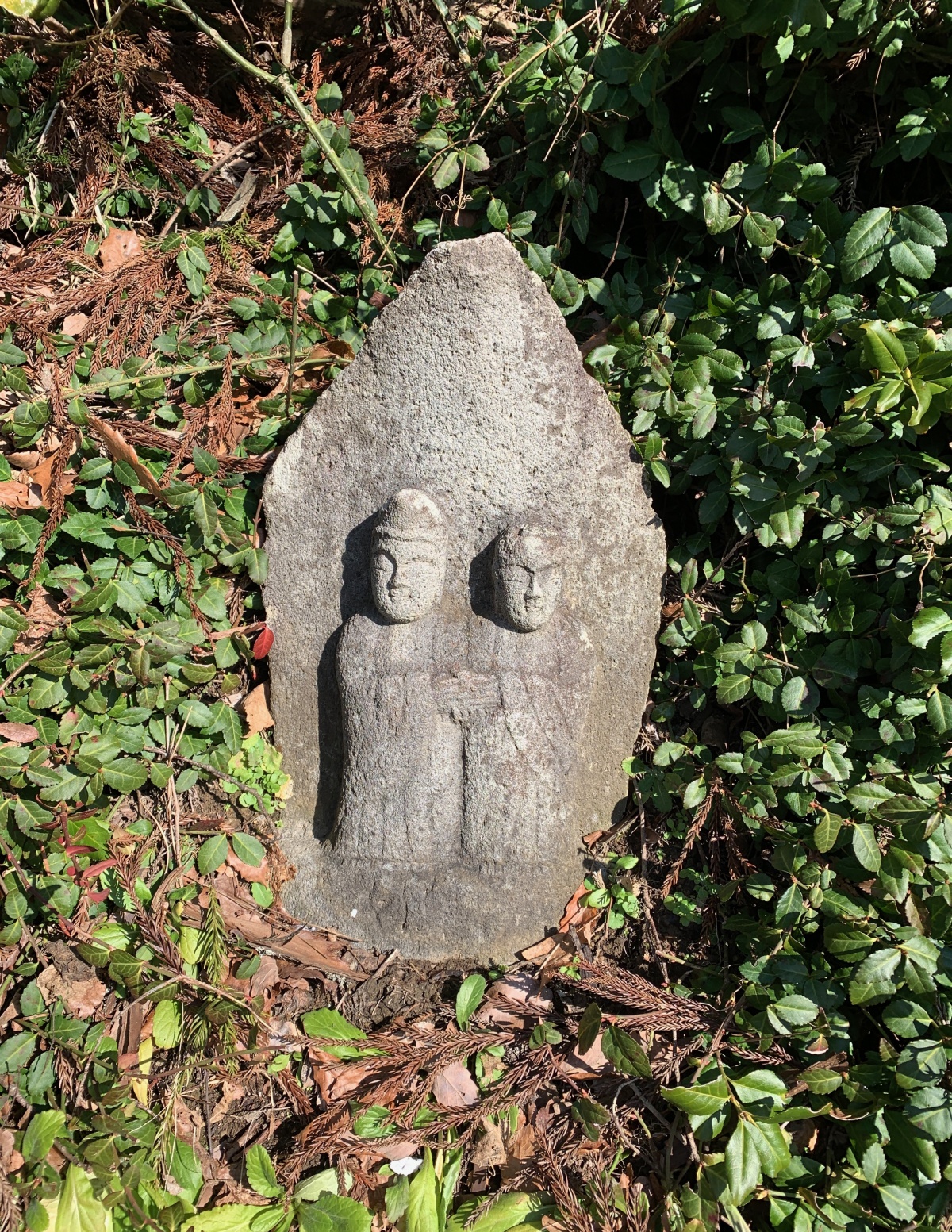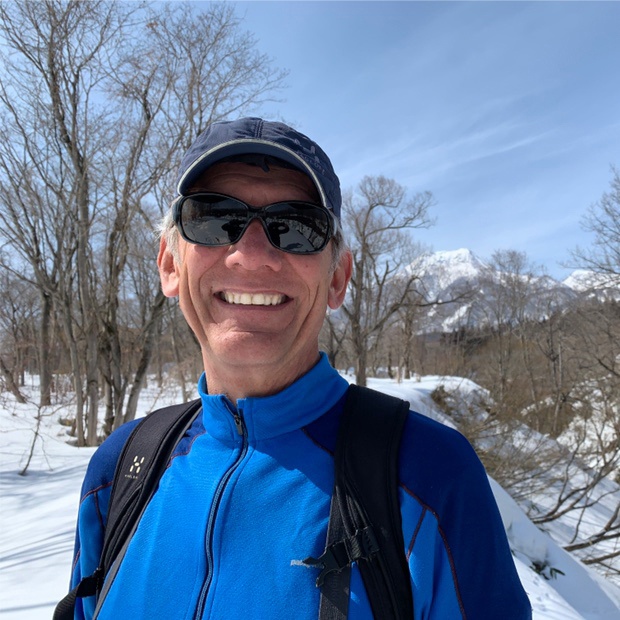Trekking Ancient Trails Along Tokamachi's Amazing Rice Terraces

The terraced rice fields of Tokamachi, Niigata Prefecture, have been called one of the most beautiful scenic spots in all of Japan, a reminder of agricultural tradition but also an amazingly graceful collection of curving lines and stair-stepped shapes set into a mountainous, forested backdrop. Local outdoor guide Bill Ross reports.
By William RossThe terraced rice fields known as tanada are found in many places in Japan, but there’s something special about what you find here in this land of tightly folded mountains and valleys. You will have no indication that they exist until, suddenly, they emerge below your path, almost flowing down from the hilltops into the valleys below. Come early in the morning, and the distant valleys and lower tanada might be gently covered in unkai, a sea of clouds, making the scene even more ethereal. It is as if it is an ancient inkbrush painting come to life.
Sadly, too many travelers today just get out of bus at a parking lot, walk to the viewing point to take in the tanada, then get back on the bus to the next destination. Thanks to the local community, though, there’s now a more intimate and far richer way to experience the tanada. You’ll discover the hardship behind the hand-wrought rice fields, hear stories of warfare and warlords going back centuries, and get a fascinating look into the life of the people who still work these mountainous rice paddies. You just have to put in a bit more physical effort.
"The train begins to ascend as we head east, and the mountains, more hills than the big peaks near Joetsu, begin to rise all around us."
The best way to get to this tanada trek is to ride the Hokuhoku train line from Naoetsu Station in Joetsu City, to the west of Tokamachi. Joetsu is set on a vast plain, much of it also covered in rice paddies. To the south are a string of tall volcanic peaks on both sides of the plain.
The train begins to ascend as we head east, and the mountains, more hills than the big peaks near Joetsu, begin to rise all around us. I exit the train at Hokuhokuoshima Station, where I meet Akira Ibi of HomeHome, a local travel and hospitality organization that has been the main mover in creating trekking trails to and around the tanada. Also joining us is Tomotaka Koyama, a local and the main guide for the treks, while fellow guide Maiko Komagata is along to provide English-language support.

Early-morning unkai—a sea of clouds—below the tanada (photo courtesy Grant Gunderson)
“It will take about three hours on foot from the start to get to Hoshitoge, the most famous of the tanada,” says Ibi. He often heads out very early in the morning or in the early evening to avoid the summer heat. As we hit the trail, I understand why. We’re in deep forest, walking on trails that follow along the rising ridgelines of the mountains.
“These trails were used for centuries by local people to get to and from their fields, or to travel within the area,” Ibi says. “Many are also part of what is known as the Uesugi Gundo, the 'war roads' used by daimyo Uesugi Kenshin’s troops as they traveled to battle—which they often did—or to Edo, today’s Tokyo."
"We pass by a few stone jizo, the little Boddhisatva statues carved by unknown local hands years ago as protectors on the trail."
Uesugi is a fascinating character from Japan’s 16th-century Warring States period. He is known for the fierce, ongoing battles he fought against rival Takeda Shingen, lord of what is today’s Nagano and Yamanashi prefectures. He had an oddly collegial relationship with Takeda; he sent salt to his rival's troops when their supply was cut off, and even wept when his rival died. His footsteps loom large on the Tokamachi trails.

The trail follows not only the mountain ridges, but a path walked by warring samurai and locals alike over the centuries; Ibi-san's team has restored sections that have fallen into disuse, or have been worn by the weather
It’s a pleasant, not too demanding hike, although there are ups and downs and some narrow sections on the trail to navigate, and good hiking footwear is recommended. “A lot of the trails weren't used in the past decades, so we had to do a lot of work to rebuild some sections,” says Koyama. “Cutting down trees and bushes isn’t so bad, but with the very heavy snow and summer rains here, some sections had collapsed or were unstable.”
In places we’re walking through what seems like a tunnel of trees and brush; suddenly we pop out to walk along a more open modern road for a bit (where we also get a welcome breeze after the enclosed forest sections), then dive back into the greenery. Ibi says that there are other trails heading out along the ridges, although many are almost forgotten and possibly impassible. We pass by a few stone jizo, the little Boddhisatva statues carved by unknown local hands years ago as protectors on the trail. There’s a real feeling of time flowing along this trail, and you can almost sense the peasants and soldiers traversing the trail in their straw sandals.
"There they are, lovingly planted with another year’s seedlings, filled with water and ready to produce another crop."
After a few hours, we descend a bit, exit the forest, follow a road and turn a corner. Before us is Hoshitoge Tanada, the most famous, and most widely photographed of all the terraces. It is spectacular: the paddies have been carved out of the hillside, but still follow the original terrain. No two fields are alike, some long and narrow, others round and fairly spacious. Groups of trees rise like islands between the water-filled paddies; to the east stand the Echigo-Sanzan, three tall mountain peaks of Mt. Hakkai, Mt. Echigo-Komagatake and Mt. Nakanodake. Echigo is the ancient name for Niigata.
It’s hard to think that these terraces were hand-carved out of the hillsides by the people we would have met on the trail if we were hiking a few hundred years ago. The tanada also seem incongruous in the world of today’s mechanized farming; many seem just too small or too inaccessible to make for efficient, modern farming. But there they are, lovingly planted with another year’s seedlings, filled with water and ready to produce another crop of the grain that is the basis of Japanese cuisine.
“The people raised rice, but they didn’t often get to eat polished white rice,” Ibi says. "They just ate millet, sometimes with a bit of rice."

One of the many stone jizo along the trail, guardians long ago carved by local hands
A few months later, I join Ibi and a few friends to hike what he calls the “history course.” We wander along another set of ridge lines to the east of our first trek, enjoying some lingering autumn colors and discovering smaller tanada in the distance all along the trail.
As we look down on some unusually large fields, Ibi explains why the tanada exist at all, and why it’s still a tough way to raise rice. “You have to remember that regular people raised rice, but they didn’t often get to eat polished white rice,” he says. Taxes were paid in rice, and the regional lords were ranked by the rice production of their regions. In the Edo period, as the population continued to grow, there was a lot of pressure from the government to develop new rice fields. "The flat lands were already being farmed, so people began to cut into the mountains and create the tanada. The farmers were left to just eat millet, sometimes with a bit of rice,” he says.
The fact that the tanada are up on the hills, not lying below, created another challenge. “Where it’s flat, they diverted rivers to feed water into the rice paddies,” Ibi says. “They had to build ponds at the top to catch the melting snow. Even today, though, if we don’t have a snowy winter there may not be enough water in the ponds in the spring.”
"Ibi also shared rumors of a fallen samurai’s sword hidden away in one of the tiny villages below us."
As we enjoy the cool breezes and rather open trail, we come across another stone jizo—but this time it's the figure of a horse. “We’re not sure when the horse died, but it must have been a special animal for the people to want to carve the jizo,” Ibi says. There are also stories of samurai wandering, wounded and otherwise, into the area during the Boshin War, referring to what is called Japan’s civil war. Lasting from 1868 to 1869, it was the last struggle between the Tokugawa Shogunate and the later-victorious Meiji imperial court. One of the major battles was in Nagaoka City, just to the north of Tokamachi. Ibi also shared rumors of a fallen samurai’s sword hidden away in one of the tiny villages below us.

Akira Ibi (right) wih guests on an autumn trek, ubiquitous tanada behind, and the Echigo-Sanzan mountains in the distance
We climb the one steep section we’ve encountered, up to a flat space on the top of a small hill. A sign says it’s a yamashiro, which could be translated as a “mountain castle.” Our guide says it was a small fortification housing a noroshi, a place where a signal fire would be lit in case of invasion or other emergencies. There were many of these all throug the mountains, set in a line of sight all the way back to the Joetsu area and off into other areas controlled by Uesugi and other rulers.
The Treks
Home Home Niigata offers treks that range from a one-hour experience (that Ibi says anyone with some sneakers can enjoy) to multi-day treks along some 15 kilometers of trails now being maintained by the local community.
Accommodations
We settle in for the night at the Toronoki House, a fairly luxurious small lodge created from an old farmhouse by a retired Tokyo hotelier. Home Home can also arrange for other accommodations: an onsen, a simple hostel, camping and other lodging options. Home Home also recently acquired an 150+-year-old farmhouse for a uniquely Japanese B&B experience, Ibi says (and which he plans to open in 2024).
Other Attractions
Tokamachi is also famous for the Echigo-Tsumari Art Field, permanent outdoor art installations and ongoing events throughout the region—one installation is even just below another of those ancient noroshi signaling sites. So there’s plenty to do pre- or post-trek.



